Study the given pedigree chart showing the pattern of blood group inheritance in a family
(a) Given the genotype of the following:
(i)Parents
(ii) The individual 'X' in second generation
(b) State the possible blood groups of the individual 'Y' in third generation
(c) How does the inheritance of this blood group explain codominance?
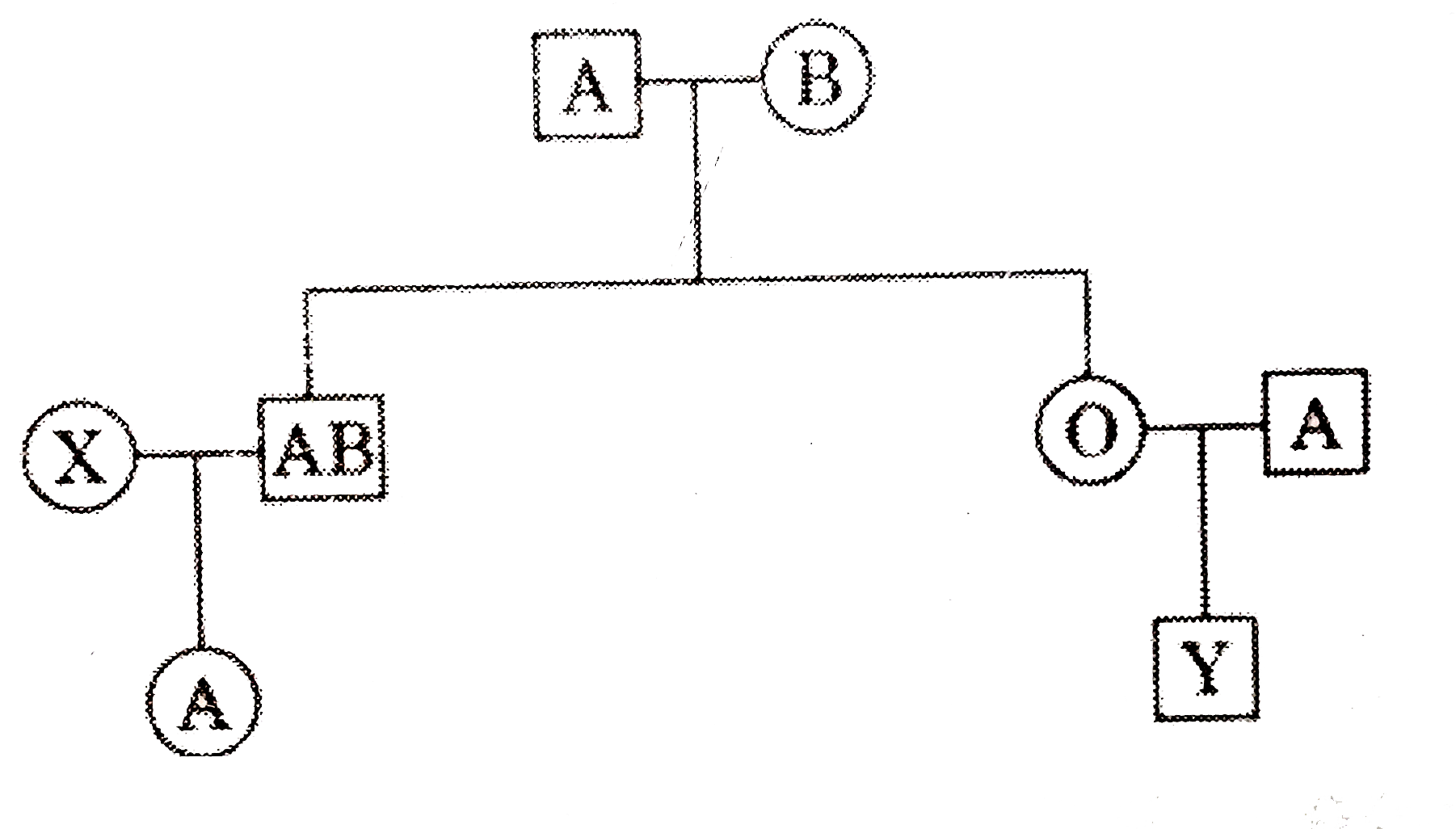
(i) Parents IAIOIBIO⏐↓⏐↓AB
(ii)X individual IOIO and IOIA
(b)individual 'Y' blood groups, IA,IO,IO,IO genotype
(c )IA and IB when stay together , show the phenomena of codaminance and express themselves in pressure of each other. In heterozygous hybrid, when both alternative alleles coexist . both the alleles show codominance.
Topper's Solved these Questions
- BOOK - TRUEMEN BIOLOGY ENGLISHCHAPTER - GENETICS AND EVOLUTION EXERCISE - SECTION-D25videos
GENETICS AND EVOLUTION
- BOOK - TRUEMEN BIOLOGY ENGLISHCHAPTER - GENETICS AND EVOLUTION EXERCISE - SECTION-B38videos
GENETICS AND EVOLUTION
- BOOK - TRUEMEN BIOLOGY ENGLISHCHAPTER - GeneticsEXERCISE - ASSERTION AND REASON122videos
Genetics
- BOOK - TRUEMEN BIOLOGY ENGLISHCHAPTER - HUMAN HEALTH AND DISEASEEXERCISE - MULTIPLE CHOICE QUESTIONS209videos
HUMAN HEALTH AND DISEASE
Similar Questions
Study the pedigree chart given, showing the Inheritance pattern of blood groups in a family and answer the following questions
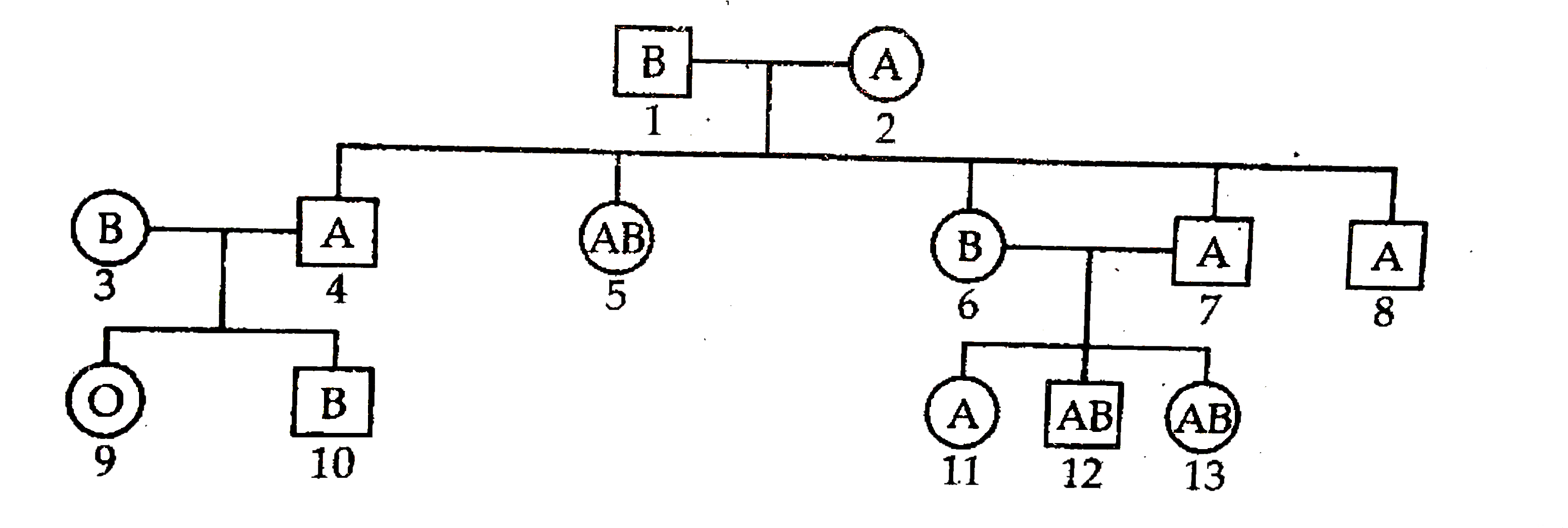
(a) Give the possible genotypes of the individuals 1 and 2.
(b) Which antigen or antigens will be present on the plasma membranes of the RBC's of individuals 5 and 9.
(c) Give the genotypes of the individuals 3 and 4.View SolutionStudy the given pedigree chart and answer the questions that follow:
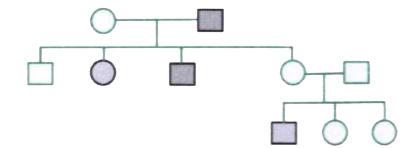
Give the genotype of the parents in generation I and their third and fourth child in generation II.View Solution
Knowledge Check
- Question 1 - Select One
Study the given pedigree chart showing the inheritance if an X-linked trait controlled by gene 'r'
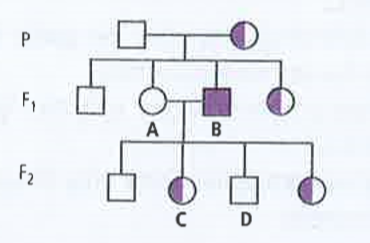
What will be the genotypes of individuals A,B,C and D respectively ?AXX,XrY,XrX,XYBXrXr,XY,XX,XYCXrX,XrYr,XrXr,XrYDXX,XrYr,XX,XY - Question 2 - Select One
The pedigree chart given below represents the pattern of inheritance of haemophilia in a family. Study it carefully and answer the following questions:

The possible genotype of member '5' is:AXHXHBXHYCXhYDNone of these - Question 3 - Select One
The pedigree chart given below represents the pattern of inheritance of haemophilia in a family. Study it carefully and answer the following questions:
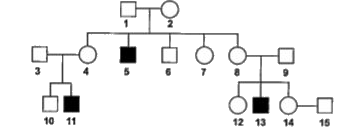
The possible genotype(s) of member '6' is/are:AXHXH,XHXhBXHYCXhXhDNone of these
Study the given pedigree chart and answer the following questions:
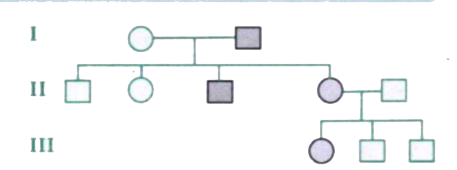
Give the genotypes of the parents shown in generation I and their third child shown in generation II and first grand child shown in generation III.View Solution(a) Explain the phenomena of multiple allelism and co-dominance taking ABO blood group as an example.
(b) What is the phenotype of the following :
(i)IAi
(ii) iiView SolutionStudy the given pedigree chart and answer the question that follow.
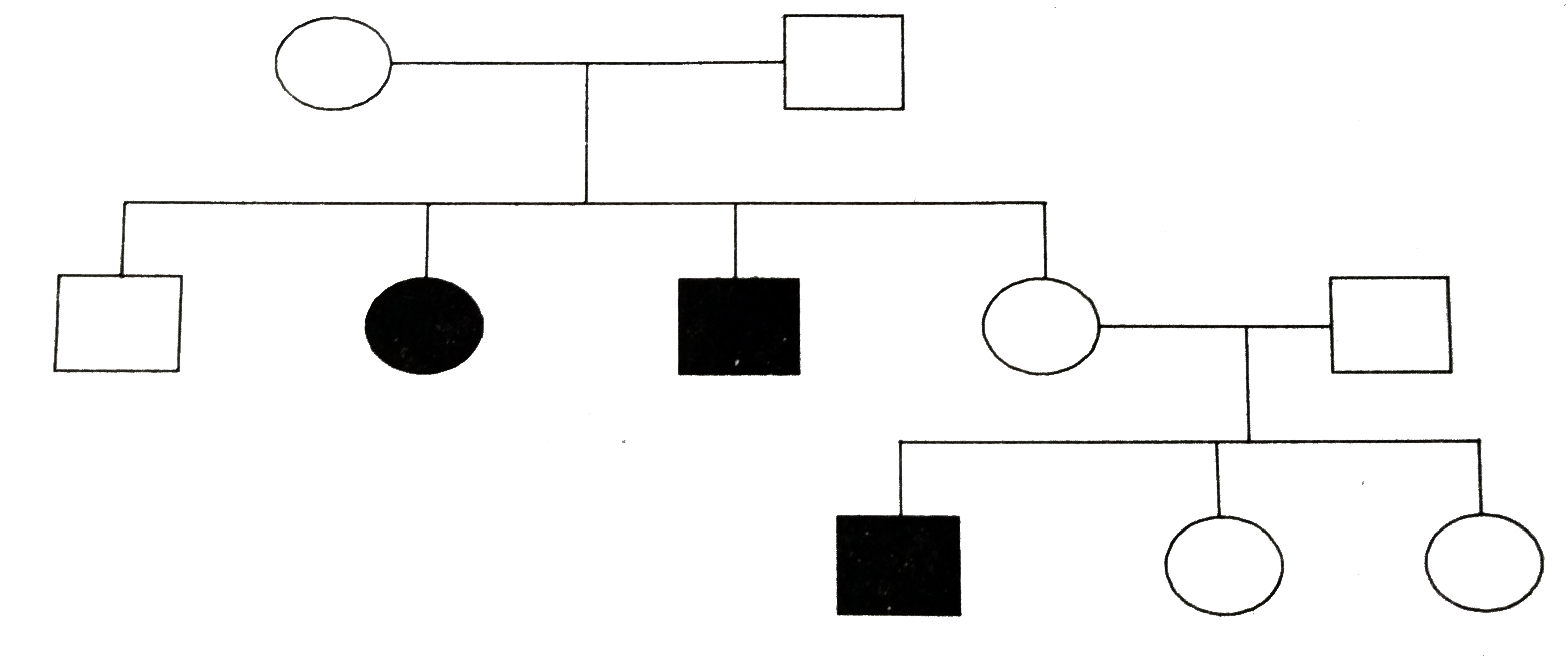
(a) In the trait recessive or dominant ?
(b) Is the trait sex-linked or autosomal ?
(c) Give the genotypes of the parents in generation I and of their third and fourth child in generation.View SolutionA women with blood group A married a men with B group . Show the possible blood groups of the progeny . List the alleles involved in this inheritance.
View SolutionStudy the given pedigree chart and answer the queation that follow.

(a) In the trait recessive or dominant ?
(b) Is the trait sex-linked or autosomal ?
(c) Give the genotypes of the parants in generation I and of their third and fourth child in generation.View Solution

